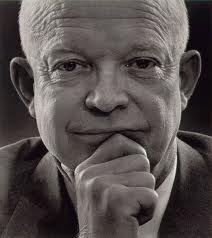Opinion/Commentary: Our Nation’s Social Injustice by LeRoy Chatfield
Opinion/Commentary
by LeRoy Chatfield
Our Nation’s Social Injustice
At year’s end it is customary for the media to review the year – who died, who divorced, who won, who lost, and on and on, ad nauseam.
I, too, reviewed 2010 and found the following:
Social injustice in the United States (2010) can be summarized as follows: 650,000 people are homeless; 44 million people live in poverty, including 17 million children; 38 million people have to depend upon government food stamps to feed themselves; 15.1 million workers are unemployed; federal or state minimum wage cover about 70% of a living wage; 1.3 million high school students drop out each year; college graduates begin their employment careers $25,000 in debt; 2.3 million people are incarcerated in prisons and jails; 50 million have no health insurance coverage; and the income gap between the very rich 1% in the country and the rest of the population is the largest in 90 years.
I have been in and around social justice issues most of fifty years and the year-end report is always the same. Oh sure, the individual numbers vary somewhat but the issues are the same and the numbers are huge. Why?
I believe the roots of our nation’s long-term social injustice – at least since 1945 – can be traced to our development and use of nuclear weapons, which in turn, generated a world-wide arms race for military dominance, or at least, mutual deterrence. In addition to the United States (1945), the nations of Russia (1949), Great Britain (1952), France (1960), China (1964), India (1974), Israel (1979), Pakistan (1998) and North Korea (2006) all possess nuclear arms, and other nations – Iran, for example – are developing them.
Any nation’s all-out commitment to prepare for war, including the research and development of weapons of mass destruction, cannot help but breed and foster social injustice. Not only because of the massive financial resources needed to build and sustain such a state of war readiness and/or engagement, but because the nation’s political and moral priorities become skewed and misplaced.
I look to President Dwight Eisenhower, five-star general and former Supreme Allied Commander in World II, who was the first U.S. president to link the arms race to our own nation’s misplaced priorities. In his first major address in March of 1953 entitled: “The Chance for Peace,” Eisenhower said:
“(The world in arms) is a life of perpetual fear and tension; a burden of arms draining the wealth and the labor of all peoples; wasting of strength that defies the American system or the Soviet system or any system to achieve true abundance and happiness for the peoples of this earth.
Every gun that is made, every warship launched, every rocket fired signifies, in the final sense, a theft from those who hunger and are not fed, those who are cold and are not clothed.
The world in arms is not spending money alone. (Emphasis added) It is spending the sweat of its laborers, the genius of its scientists, the hopes of its children. The cost of one modern heavy bomber is this: a modern brick school in more than 30 cities. It is two electric power plants, each serving a town of 60,000 population. It is two fine, fully equipped hospitals. It is some fifty miles of concrete pavement. We pay for a single fighter plane with half million bushels of wheat. We pay for a single destroyer with new homes that could have housed more than 8,000 people.”
President Eisenhower used his “Chance for Peace” speech to invite the Soviet Union – and all the nations in the world – to join with the United States and agree to abandon the arms race and wage war against the world’s real enemy: social injustice.
“This peace,” he said, “founded upon decent trust and cooperative effort among nations, can be fortified not by weapons of war but by wheat and by cotton, by milk and by wool, by meat and timber and rice. These are words that translate into every language on earth. These are the needs that challenge this world in arms.”
Hypocritical? Utopian? Self-Serving? Naïve? Or a little of each? The fact remains: Eisenhower made a breathtaking proposal to replace the arms race and the preparation for war with a campaign for international social justice. The proposal fell on deaf ears, it went nowhere. The arms race intensified and continued unabated until the Cold War ended when the Soviet Union dissolved in the early 90s.
Consider these sobering facts: Since 1953, and continuing to the present day, the United States has been waging war for more than twenty-seven years – Vietnam, Desert Storm, Afghanistan and Iraq – and in the ongoing (and simultaneous) wars in Afghanistan and Iraq, no end is remotely in sight. In terms of our nation’s commitment to warfare, at the close of 2010 there were more than 2.3 million people serving in the U.S. military, not counting the 210,000 military contractors employed in Iraq and Afghanistan; the nation’s defense budget was just shy of $1 trillion (54% of national budget); and the United States operated more than 700 military bases in 130 countries and possessed 5100 nuclear warheads with dedicated military hardware and installations to launch them.
Our county’s commitment to militarism is so pervasive and complete, it is a political “given” – it is never a campaign issue because no aspiring politician dare be tarnished with the charge of being soft on “national defense” or to use the more current euphemism, the “war on terrorism”.
Let’s be honest: our country’s values are wrapped around the immoral axle of militarism and weapons of mass destruction. Our national social injustice scorecard at the end of 2011 will show little or no improvement. Perhaps a better economy will make some changes on the margin – an 8 percent unemployment rate instead of our current 9.3 percent – but there will be no national movement on behalf of social justice. Yes, some progressive lip service when necessary, even occasional window dressing – repeal of DADT and ratification of New START come to mind – but nothing substantial enough that could be characterized as national policy or an integral part of the national agenda.
(I grant you: the passage – and continuing implementation – of President Obama’s health care reform, fifty years in the making, marks the exception to my pessimistic assertion).
Peace is not defined as an absence of war; peace is a nation’s commitment to social justice for its people – affordable housing, living wage employment, quality education for all children, available and affordable higher education for all who seek it, universal health care, a complete rethinking of its criminal justice system and protection of the world’s environment.
We have come a long way since 1953 when an esteemed war general and a Republican, President Eisenhower proclaimed:
“(These proposals) conform to our firm faith that God created man to enjoy, not destroy, the fruits of the earth and of their own toil. They aspire to this: the lifting, from the backs and from the hearts of men, of their burden of arms and of fears, so that they may find before them a golden age of freedom and of peace.”
Yes, we have come a long way – the wrong way, in my view – and no leader is present to lead us to the “golden age of freedom and peace” but even though discouraged, I remain hopeful: if one of our presidents, fifty-eight years ago, possessed the wisdom and courage to challenge the nations of the world, – including his own – that investing in social justice is the only way to achieve world peace, surely there will be another!
.


